Spring in Maine is a special time for a variety of reasons. The days are longer. The sun is warmer. Bird song returns, and sure, the flowers are beginning to come into bloom. But for me, nothing is better about spring in Maine than the annual migration of our native amphibians known as “Maine Big Night.”
For as long as I can remember I have been fascinated by frogs and salamanders. I always thought they were cute, mysterious, and beautiful. Nothing brings a smile to my face like the sounds of the first spring peepers on a rainy night at the beginning of April.
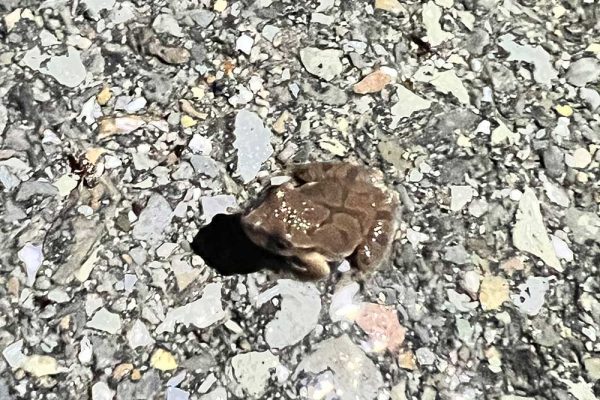
Spring peeper
I always knew spring meant the return of frogs from their winter slumbers, but I did not know until I was finishing up my graduate program at the University of Maine that there was a phenomenon called Big Night, where thousands of frogs, salamanders, toads, and newts emerge from the forest and convene on their spawning vernal pools across the state to breed.
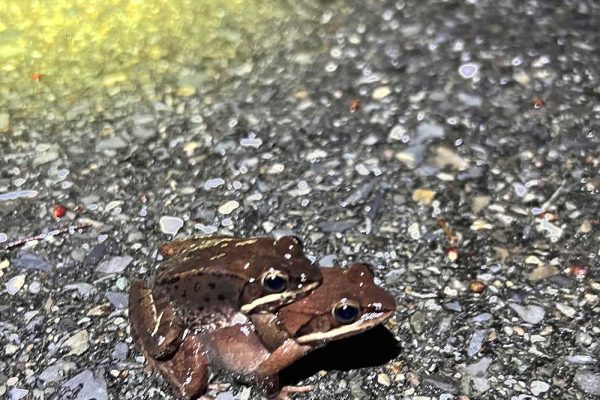
Male and female wood frogs
Big Night is a misnomer since the amphibians do not exclusively migrate for one night but over a series of warm, rainy evenings in April, first to their mating pools, and then back to the forests, ponds, and fields where they will spend the rest of their year.
This is the only time of year you can realistically expect to see many of Maine’s native salamander species above ground and in the open. I remember my first Big Night experience in 2017: I went out around 8:00 p.m. and saw next to no movement, but then around 9:00 p.m. everything changed. The path I was on, once barren and motionless, was suddenly teeming with life and movement as wood frogs, spring peepers, spotted salamanders, blue-spotted salamanders, and red-backed salamanders began appearing and crossing the path to reach their respective destinations. The red-backed were so small they looked like orange pine needles carpeting the ground—a truly out-of-body experience to witness.
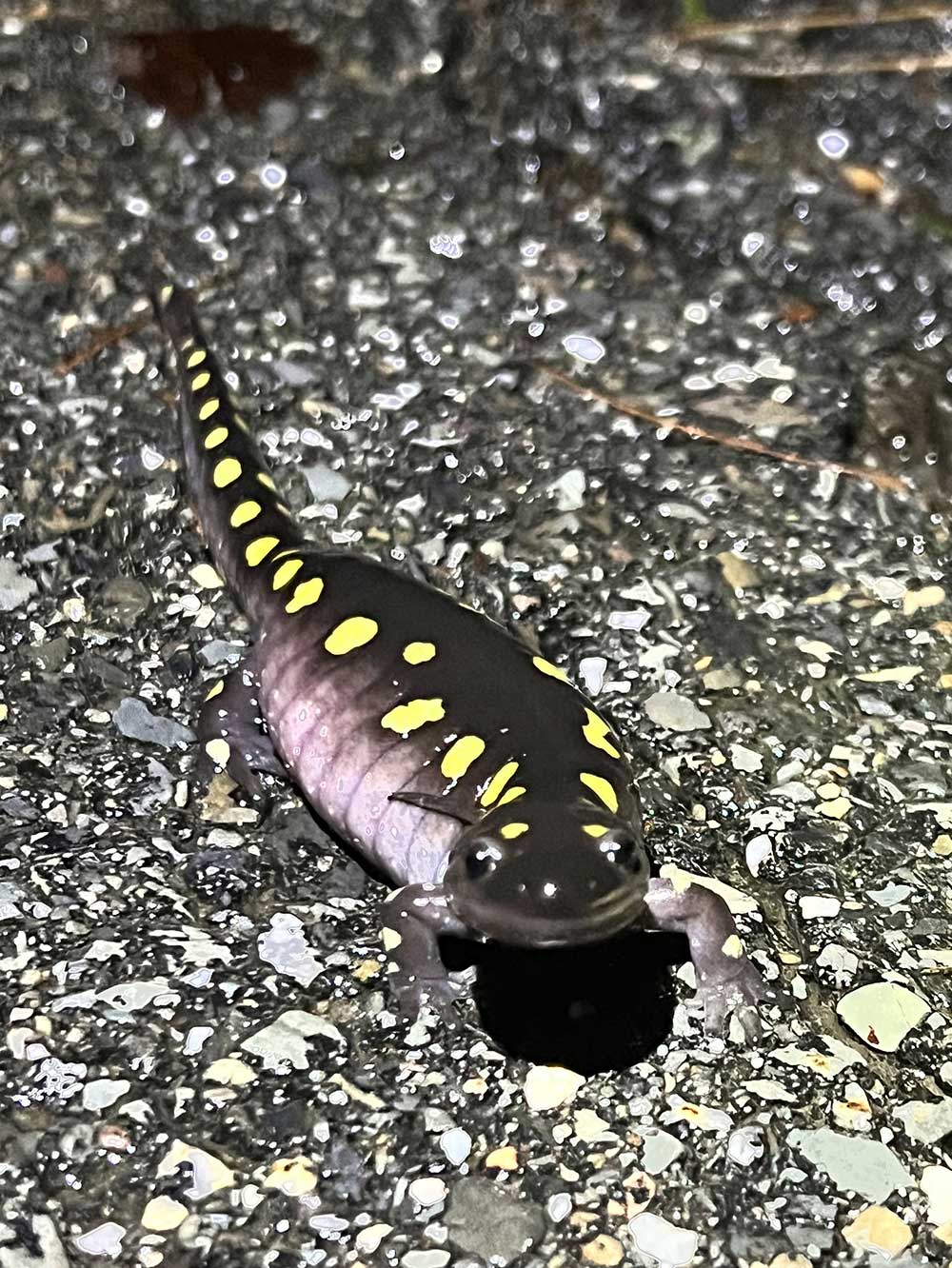
Spotted salamander
Fast forward seven years to April 12th, 2024, and I am in the same location at roughly the same time of night. The rain that had been falling steadily throughout the day slows to a heavy mist that makes it hard to see far in front of me with my head lamp. The sounds of the peepers and wood frogs already to their destinations is deafening and rings through my ears and head. Within five minutes of walking, my journey is rewarded as I come across a lone spotted salamander crossing the bike trail—a large female—who is gracious enough to pose for a photo with me before I set her on the side of the trail to continue her journey.
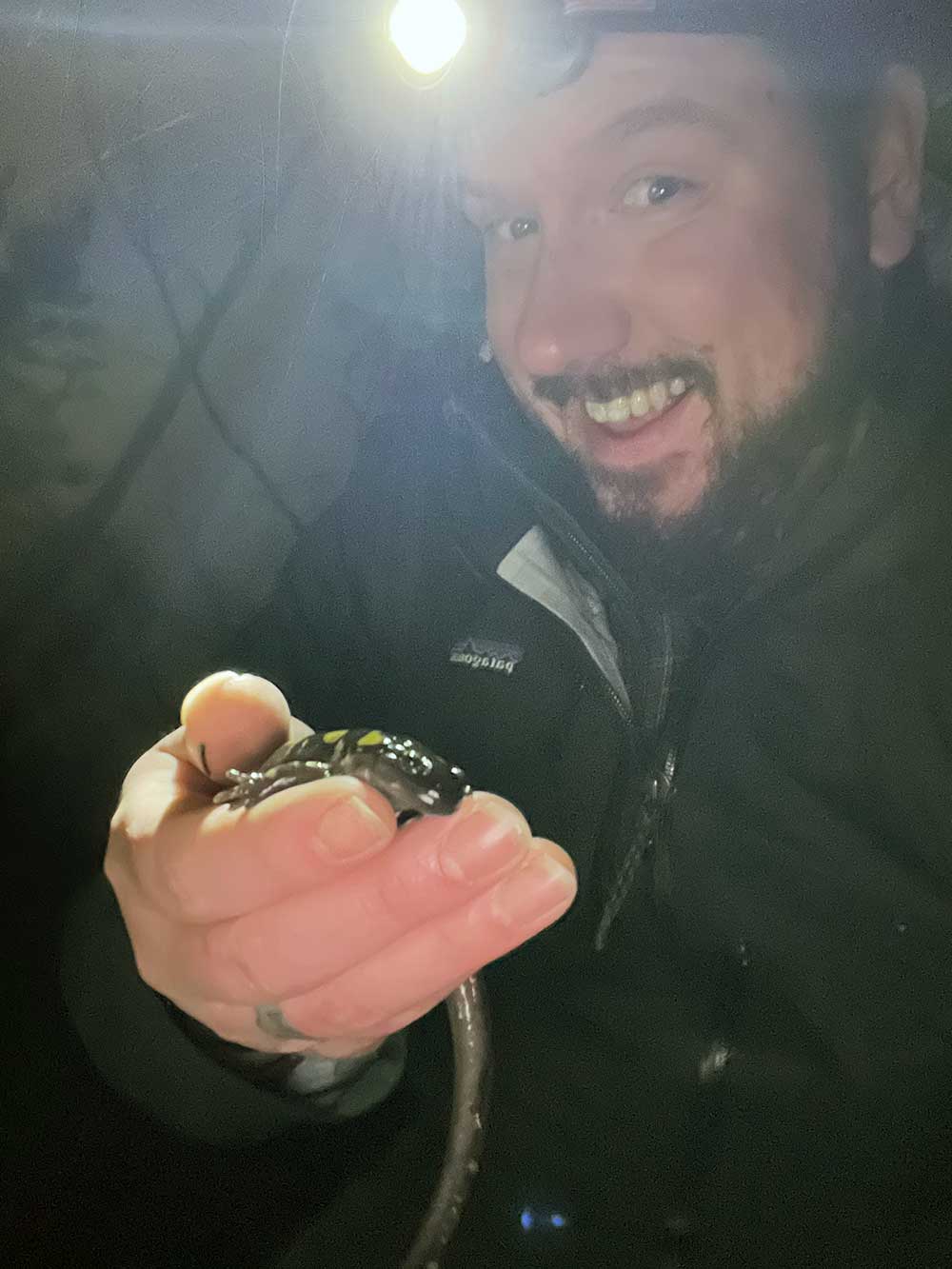
Author with a yellow spotted salamander
Within another 10 minutes, I come across countless peepers, 10 wood frogs, 7 more spotted salamanders, and to my delight, a blue-spotted salamander.
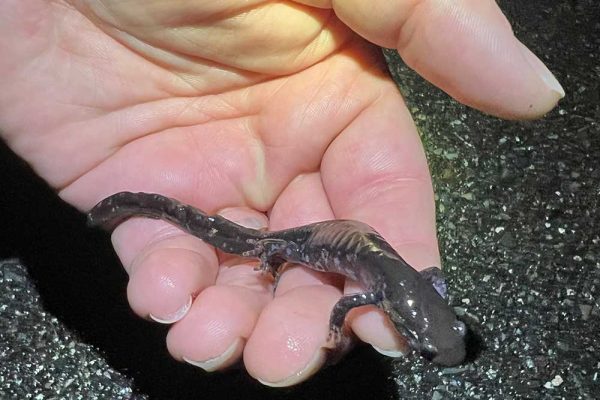
Blue-spotted salamander
Most are happy to pose for photos with me despite a few camera-shy wood frogs that hop away from me as quickly as possible.
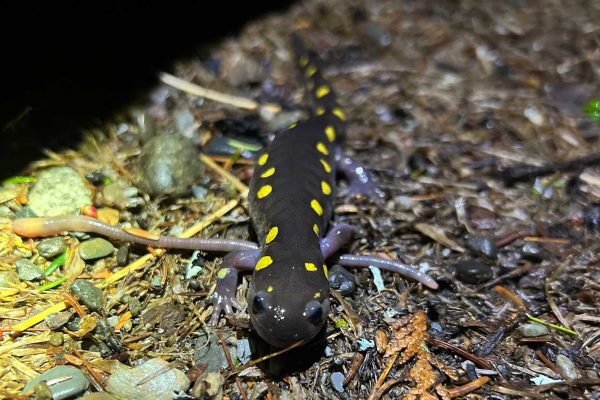
Spotted salamander
I stand for as long as possible in the misty, dreary night soaking up the sounds of life emerging from the catacombs of winter, allowing their songs to penetrate to the very core of my being—for a moment becoming one with the world around me. Eventually, I decide to head home, damp and chilly from the soggy night, but with mind and soul refreshed, until next April.
For those interested in learning more about Big Night, check out “Maine Big Night: Save the Amphibians” that was started by 2020 Brookie Award winner, Gregory LeClair, and learn how you can take part in this incredible natural event.
—by Ben Wyman
All photos by Ben Wyman.











Leave a Reply